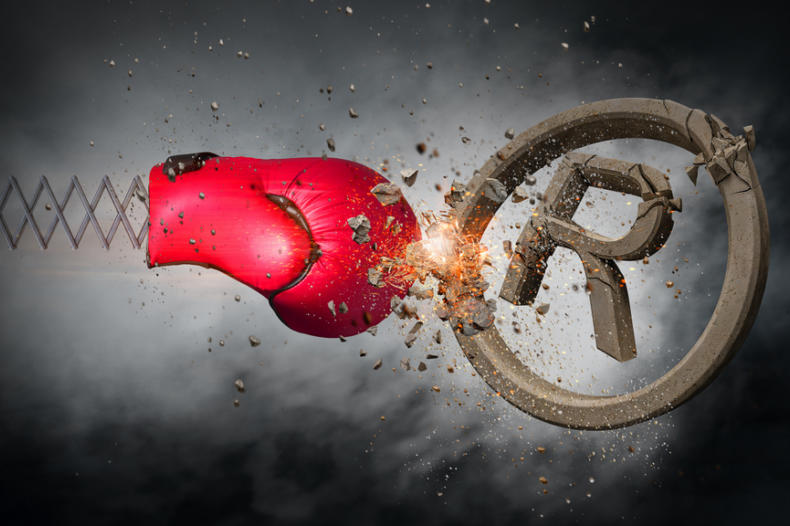Fighting back against the copycats
What are your options when copycats come knocking on your door? We explore the benefits of IPEC.

Intimation is said to be the sincerest form of flattery. But when it comes to someone using your intellectual property (IP), the age-old adage does not ring true.
The issue of IP infringement is relevant to all businesses, from sole traders and SMEs (small and medium-sized enterprises), through to multi-national corporations.
The mere mention of litigation to many can be daunting, conjuring up images of bewigged ruddy faces or an army of suited and booted lawyers, not to mention eye-watering sums.
However, today, IP litigation in the UK has been set up so that businesses can litigate themselves or can instruct lawyers in a manner that makes the cost more predictable than it has been traditionally.
The Intellectual Property Enterprise Court (IPEC) is one of the forums for hearing IP disputes.
What is the IPEC?
IPEC provides a streamlined procedure for hearing a claim together with a fixed costs regime (both legal costs and recoverable damages/account of profits).
IPEC has two ‘tracks’: the small claims track and the multi-track – see here and here for the court’s official guidelines.
Both tracks allow parties to bring claims for copyright, unregistered design, trade mark, and passing off claims and enable remedies such as damages, the account of profits and a final injunction.
Cases involving patents and registered designs or where an interim injunction is sought must be heard in the Multi-track.
The small claims track
The small claims track (SCT) offers a forum for lower-value disputes – think the small claims court but for IP cases.
Damages are capped at £10k and legal costs are not recoverable from the other side. Rightsholders are often self-represented in the SCT.
Indeed, the SCT has been embraced by copyright owners in particular (1), especially freelance photographers where the issue of copying is very cut and dry.
The multi-track
The multi-track is like a ‘lite’ version of the High Court, featuring streamlined disclosure and active case management by an IP specialist judge.
Damages for a successful party are capped at £500k and legal costs are recoverable from the other side up to £50k. The higher value and greater complexity of a case in the Multi-track means that it is advisable to appoint a registered trade mark attorney (2) or solicitor to assist you with your case.
Your options
Deciding whether to elect the SCT or Multi-track can depend on a number of factors. Rightsholders should consider:
- What IP rights do you own and which ones do you want to rely on for your claim?
- What is the main aim of litigation?
- To simply stop someone from doing something in future or to stop someone now, before a final judgment (e.g. because it is impacting significantly on your own business)?
- Do you want to recover damages? (lost profits as a result of the infringement) or an account of profits (what part of the defendant's profit is directly attributable to using your IP)
- What is your budget for litigation? This is especially important if you are unsuccessful, as you will need to pay the other sides legal costs as well as your own legal costs (3)
Golden rules
Here are some golden rules for stopping the copycats:
- Keep a trail of your design creation process: design iterations (author/date/location), design decks and the existing market are all useful
- Ensure that you own the IP in anything created by third parties (non-employees): the author or creator of the work is usually the first owner of any copyright and unregistered designs
- Think about what you want to protect: product shape, packaging, surface pattern, name?
- Think about how you want to protect it: consider registered designs, 3-D trade marks and position marks (trade marks indicating the specific way in which a mark is placed on or affixed to the product e.g. Louboutin’s red sole)
- Monitor the market: this can involve self-checking on online marketplaces and websites through to subscription monitoring services
- Budget: Put some money aside for legal protection, exploitation and enforcement: it is often a matter of when not if for successful brands
- Consider legal advice at an early stage: clear-cut cases might lend themselves to a DIY approach, but most can benefit from a level of legal assistance at the outset e.g. to resolve a case pre-litigation or to ensure that the legal argument is correctly framed
Conclusion
It’s important to stress that the ability to litigate does not mean that litigation always needs to be pursued, nor does initiating proceedings stop the parties from negotiating an out of court settlement before judgment. The main thing is to be aware of the options and to ensure that your IP is litigation-ready, should the copycats come calling.
1. Guidance IP crime and enforcement for businesses: https://www.gov.uk/government/publications/ip-crime-and-enforcement-for-businesses
2. Attorneys with an Intellectual Property Litigation Certificate may conduct litigation and appear in the IPEC.
3. There are now after-the-event (ATE) insurance providers that fund claims brought in the IPEC where a case is deemed to have a high enough prospect of success


